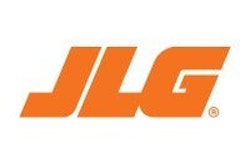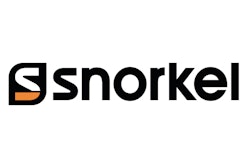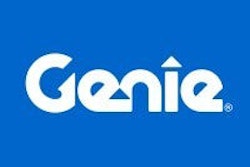
The buzz of optimism can be heard throughout the U.S. rental industry these days, a sound perhaps most welcome in the aerial sector, hard hit by the recession of the past few years. At both The Rental Show and CONEXPO this year, leading manufacturers reported significantly increased sales of aerial equipment, a sign of burgeoning economic recovery.
"The industry is back," stated Tim Ford, president of Terex AWP, at The Rental Show in February, noting that Terex saw a 50-percent increase in units shipped within North America during 2010 versus 2009.
"The industry for aerials is very strong," adds Matt Fearon, vice president and general manager, AWP Americas at Terex. "The primary driver for demand has been from rental companies wanting to refresh their fleets," he says. "We are also getting a lift on new equipment sales because there is less late-model, used equipment available."
Globally, increased demand from developing markets in Brazil, China and India has bolstered the recovery of the aerial industry, but the trend is homegrown as well. "There is quite a bit of activity going on right now in North America, particularly in the oil-related industry in Texas, Quebec and the Gulf Coast," Fearon says. "Although there isn't a lot of 'new build' going on, there is quite a bit of refacing work on existing buildings, so scissors are in big demand too."
While AWP sales are increasing, it will take time to reach levels seen before the recession hit. "At Haulotte, there has been an increase in the sales of aerials over the last year from the previous two, as the market slowly recovers, but it will be a few more years to ramp up to the units delivered in 2008," says Tami Becher, North America marketing manager. Haulotte Group's sales were $104.3 million in the first quarter of 2011 compared to 2010, an increase of 50.7%. According to company reports, increased sales in Asia, Brazil and Europe are contributing factors, as well as demand in North America from rental companies refreshing their fleets.
Haulotte's equipment sales were up 75.5%, representing 67% of the company's total revenue. Specifically, North American sales grew by 16%. Meanwhile, service activities and rental business rose by 17.6% and 14.8% compared to 2010's first quarter.
For its part, JLG Industries is seeing market recovery ramping up faster and stronger than expected, according to industry reports, primarily due to rental companies replacing their aging fleets. To that end, the top 20 rental companies in North America are increasing investment, with CapEx from those companies up 30 to 50 percent over last year.
Rental companies buying
Aerial manufacturers are selling more units to rental companies replacing their aging fleets, but does this trend reflect a true recovery?
"We are seeing optimism throughout the industry," says Fearon. "Overall, we feel that business is gradually increasing. We are seeing a concerted effort from rental companies to raise rental rates."
David Smith, president at Snorkel North America, says there is more than just fleet replacement going on. "We expect to see a modest increase in CapEx from the major rental companies in 2011. This is largely fleet replacement, although they will invest in new products for specific contracts," he says. "We also think 2011 will be the year that they start to seriously invest in Pop-Up and other low-level access products."
It is precisely those niche products that will help sustain the recovery for the aerial market, says Becher at Haulotte.
A far cry from commodity status, differentiating between brands of aerial equipment is tougher than ever, says Alan Dotts, AWP National Sales Manager at Toyota Material Handling, U.S.A., Inc. "Rental companies and end users are closely evaluating cost of ownership, product value in terms in quality, value and productivity, along with financing options for fleet replacements/upgrades," he says.
"It is an excellent time to look at the true cost of operating your fleet," Dotts continues. "In the last few years, machines that should have been rotated out and replaced were kept on hand due to the high rental demand. This drove up maintenance costs. Sometimes, machines were purchased on a 'what's in stock now' basis to fill an immediate job need. As a result, many fleets have become a mixed assortment of brands, which can result in higher training, service and parts costs. When you look at the overall cost, it still makes sense to replace an older machine now to help lower maintenance and other expenses and to properly position your business for when the market returns."
Smith at Snorkel says the major manufacturers have flushed out most of their inventory, while rental utilization and rates are improving as customer demand is returning. "Furthermore, there is a growing amount of interest in low level access - lightweight, extremely portable products that bring the safety and productivity benefits of aerial lifts to trades and professions that still rely on podiums or stepladders. We see this as a major growth area over the next five years."
On the down side, access to credit remains a key factor for small and medium-sized rental companies wanting to invest in aerial lifts. "The situation is slowly improving, but the banks could do a lot more to support these family-owned businesses," says Smith.
Fearon agrees, noting that despite positive signs of recovery, some rental companies are still struggling to survive and funding sources for mid-sized and smaller customers are still very constrained. "Through Terex Financial Services, we are helping to finance some of our rental company customers," he says.
Lingering challenges
In addition to the continuing paucity of available credit, the aerial industry battles several foes in its fight for recovery. "Raw materials are a major concern right now," says Fearon. "Commodity prices are up across the board. Steel, for example, is up 25% since November. This is driving an increase in pricing from our suppliers, increased transport costs and overall operating costs."
This, of course, translates into higher prices for consumers. JLG, for example, is reported to have responded to rising raw material costs by increasing its prices by 3.5 percent. Meanwhile, however, the company continues to increase production capacity to meet demand and JLG is seeing the market ramping up faster and stronger.
Supply chain management is also going to be critical. "The supply chain lost a lot of its people and capabilities when the rental companies turned off the tap back in 2008," Smith says. "The supply chain will dictate how fast the aerial lift industry can turn that tap back on. Everyone is pleased that the industry has returned to growth, but it brings its own cash flow management challenges. At Snorkel we will be carefully managing that growth to ensure it is good for our customers and good for our business."
Looking in the crystal ball
Despite the challenges, leaders within the aerial industry expect to see continuing improvement in 2011 and beyond. "Over the next year, rental companies will continue to replenish their aging fleets. Although we don't believe it will return to what we saw a few years ago, we do believe that housing will start to come back over the next five years," Fearon predicts. "We also will start developing our government contracts, as well as furthering our cross-selling program by making other Terex products available to the rental channel - such as cranes and bridge inspection equipment."
Manufacturers know that sticking with the status quo will not help bring about full recovery. "We see manufacturers responding to current market conditions with greater product innovation and technology offerings to support their customers' needs," says Dotts with Toyota. "Aichi's top priorities are to lead the industry in safety, innovation, customer service and as a total solutions provider."
To that end, Snorkel remains very optimistic about the future of the low-level access market. "For 2011 we expect rental companies will start investing in low-level access and by 2015 these will be mainstream products you find in any Mom & Pop rental store," says Smith. "The general aerial lift industry will experience growth this year as construction starts to come back, followed by gradual growth for the next four or five years."
Becher says recovery won't happen overnight, and foresees a shift in how manufacturers approach the market. "Over the next five years, manufacturers will excel within certain categories and thus, focus more on the manufacturing abilities to ramp up those areas as the industry demands," she says. "One company cannot be all things to all customers, there will always be a sweet spot for a manufacturer to excel. Over the next five years as the industry grows back to the 2008 years, a wider spread of the market share will take place."
Looking forward, Dave Baxter, director of strategic business planning at JLG, says the aerial industry is still very young. There is still a lot of work to be done in penetrating new markets and getting professionals to see there is a more effective way of getting their job done. "There's a lot of room for adoption of aerial equipment and for manufacturers to introduce new products at a lower price point," he says. "This is a not a mature market, by any means."




















